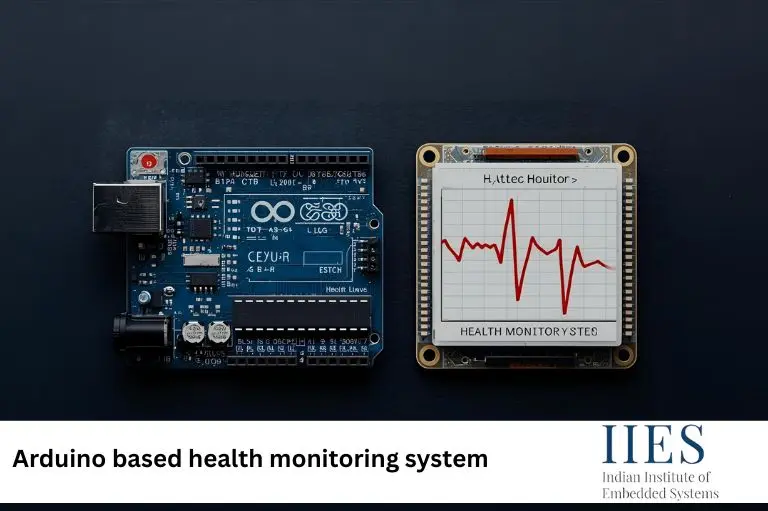
In today’s IoT era, an Arduino-based health monitoring system plays a vital role in tracking and maintaining personal well-being. With the help of sensors, wireless communication, and real-time processing, such systems can continuously monitor vital signs like heart rate, body temperature, and SpO₂.
When combined with FreeRTOS on Arduino, these devices transform into reliable, power-efficient, and responsive health trackers. From wearable health monitoring devices to IoT health monitoring systems, understanding how the hardware, software, and RTOS architecture come together is essential for building smarter healthcare solutions.
An Arduino health monitoring system is a compact electronic solution that uses sensors with Arduino to collect and process health parameters in real time. Typically designed as a wearable health monitoring device, it can measure:
Unlike traditional devices, Arduino makes prototyping easier, while RTOS ensures reliable execution of multiple sensor and communication tasks.
A standard Arduino sketch can handle simple sensor reading. Still, when multiple processes run simultaneously — such as reading sensors, displaying results, and sending data via Bluetooth Low Energy Arduino — timing issues may occur.
By integrating FreeRTOS on Arduino, developers get:
The system consists of both hardware and software parts that work together to monitor health data.
Each component plays a vital role in ensuring accurate data collection and seamless communication.
In an Arduino-based health monitoring system, tasks are divided logically:
This design ensures smooth performance without blocking delays.
| Feature | RTOS-Based Health Monitoring System | Non-RTOS Health Monitoring System |
| Task Handling | Multiple tasks run concurrently (sensors, BLE, display) with FreeRTOS on Arduino | Sequential execution is harder to manage multiple processes |
| Efficiency | Optimized scheduling ensures smooth performance | May face delays and blocked functions |
| Power Management | Supports idle hooks, deep sleep, and duty cycling | Limited power-saving options |
| Scalability | Easy to add new features (IoT health monitoring system, cloud sync) | Difficult to scale without rewriting large portions of code |
| Use Cases | Advanced wearable health monitoring devices with BLE & IoT | Basic sensor with Arduino projects (temperature, heart rate) |
| Reliability | Predictable response, ideal for medical and critical apps | Risk of missed data or delays |



Since a wearable health monitoring device depends on battery life, FreeRTOS helps reduce power usage by:
One of the most effective methods for transmitting health data is Bluetooth Low Energy (BLE). With BLE, the tracker can connect to:
This integration makes the project a true IoT health monitoring system.
An Arduino-based health monitoring system brings together sensors, Bluetooth communication, and FreeRTOS for efficient, reliable health tracking. By balancing power management, real-time performance, and IoT connectivity, developers can create wearable devices that are both practical and scalable.
Whether you’re building a simple Arduino body temperature sensor project or a full IoT health monitoring system, RTOS ensures dependable multitasking, making Arduino an excellent choice for health tech innovation.
It’s a device that uses sensors with Arduino to track vital health metrics like temperature, heart rate, and activity levels.
It provides task scheduling, efficiency, and low-power operation in wearable devices.
Temperature sensors, pulse sensors, SpO₂ sensors, and accelerometers.
It enables seamless communication between the wearable device and mobile apps or IoT platforms.
Yes, data can be synced with platforms like ThingSpeak or Blynk for remote tracking.
Indian Institute of Embedded Systems – IIES